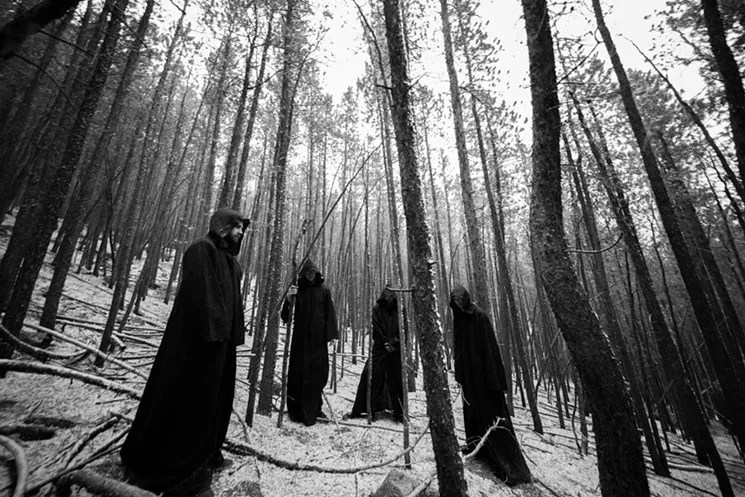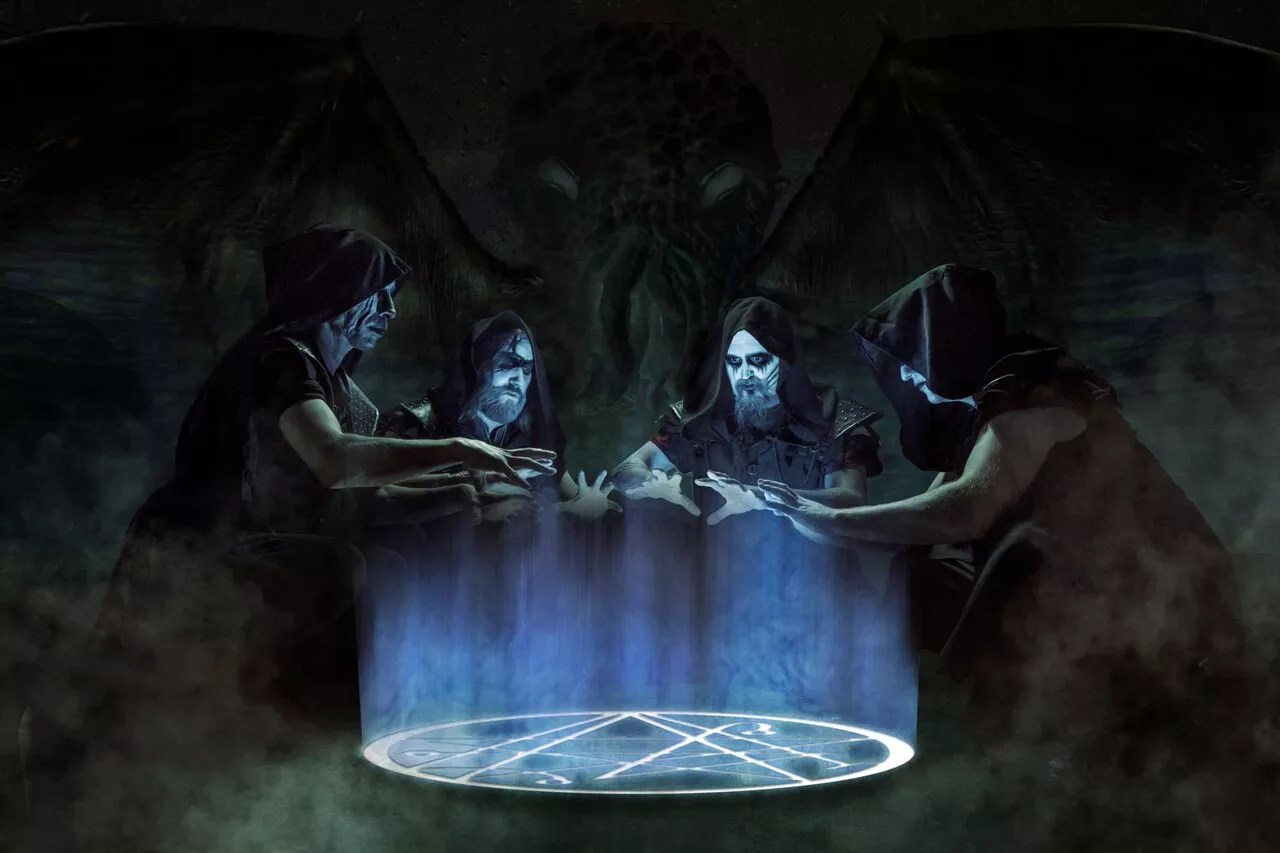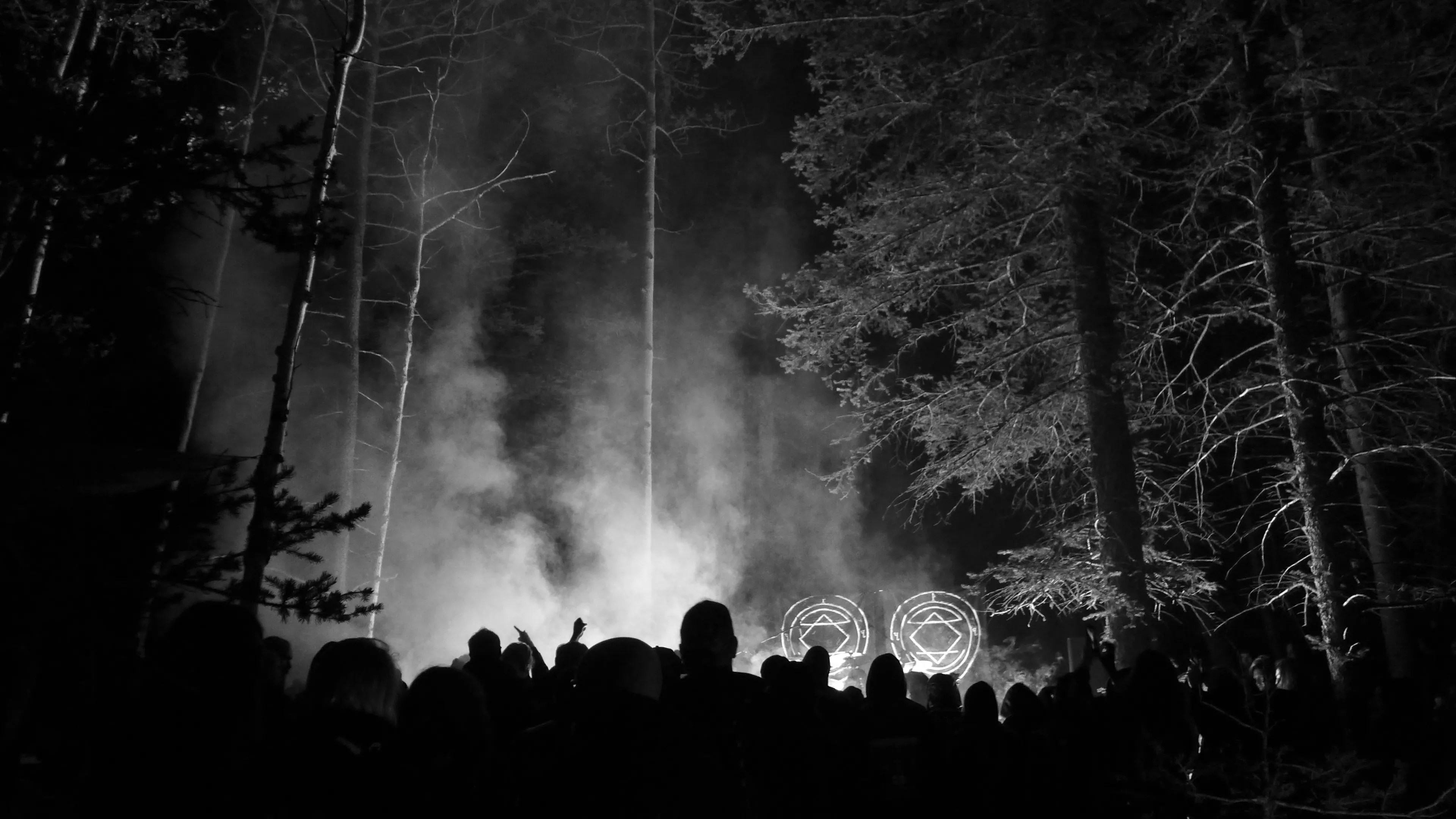
Courtesy Alvino Salcedo, aka Pale With Decay

Audio By Carbonatix
Metal has long fetishized pagan priests and their witchy rituals, and Green Druid’s recently reissued album Ashen Blood is no exception. For readers who haven’t warmed to the pagan iconography of so much metal, the symbolism seems a bit, well, antiquated, giving them a ripe opportunity to tease metal heads. Gregory writes:
Why do so many metal album covers look like a gaggle of Scottish priests got lost in the woods? There’s roads all over. With signs. How are all you getting fucking lost?
Christy responds:
Old GPS, no signal, hoods covering their eyes.
Gregory quips back:
Well, no one’s gonna give them a ride looking like that. They need to clean up and get some current technology.
All jokes aside, Westword is thrilled to cover the metal scene – even when it’s obsessed with antiquated rites. Here are some of our recent stories about the genre.

Crafteon summoning Cthulhu during a black mass.
Boutte Photography & Design
“Black Metal Act Crafteon Casts H.P. Lovecraft’s Dark Spell Over Denver“

Sar Isatum
Matthew Zinke
“Black-Metal Drummer Has a Rocky Mountain High“

Gathering of Shadows 2017.
Tom Murphy
“Inside Colorado’s Secret Black-Metal Festival“
From Ben Salmon’s original story: “Denver Doom Act Green Druid Reissues Ashen Blood.”
Denver-based doom-metal quartet Green Druid didn’t go from playing local dives to releasing its debut album via the influential Earache Records label overnight – though sometimes it feels that way. “To be honest, it’s still kind of surreal,” says guitarist Graham Zander. “In a lot of ways, I think we went from zero to sixty.”
The four went to work writing and recording a nameless EP, then a full-length called Ashen Blood, which they celebrated with a local release show last summer. Now, the band is re-releasing both (combined, re-sequenced and titled Ashen Blood) via Earache Records – a pioneering label in extreme metal. At seven tracks and 75 minutes long, it’s a faithful celebration of the stoner and doom genres, complete with wizard robes, fantastical lyrics, plodding tempos and earth-moving guitar riffs. Green Druid does stoner and doom right.
What do you think of the metal? The local scene? Share your thoughts in a comment, or email editorial@westword.com.